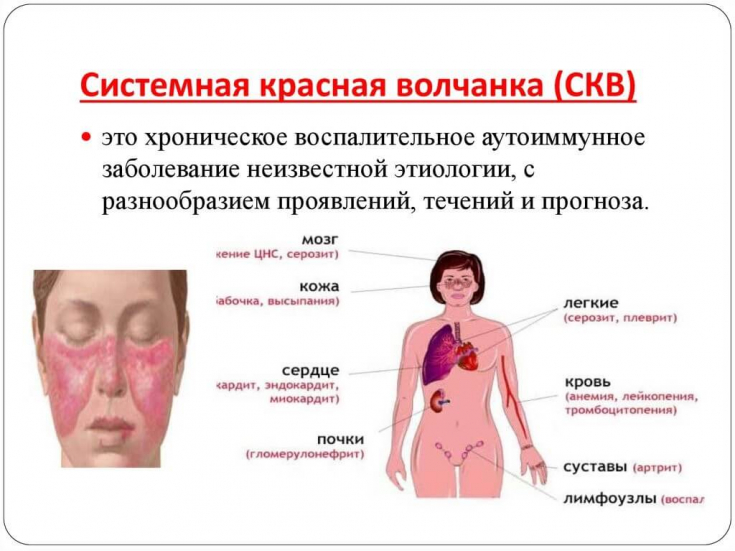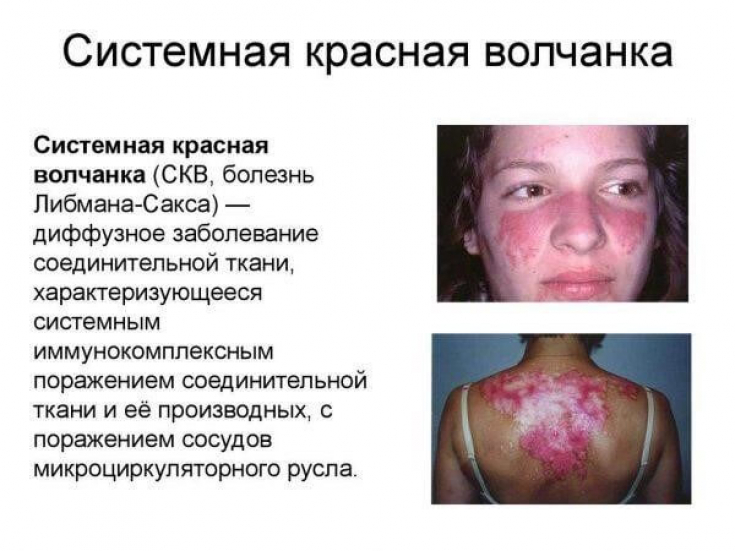There is a large body of evidence from studies in patients who had skin manifestations of systemic lupus erythematosus strongly recommending effective UV protection with sunscreens and smoking cessation.
In atypical or refractory cases, consider diagnostic skin biopsy.
In this publication on estet-portal.com we will consider the therapy that is prescribed to patients with specific manifestations in SLE.
- Therapy for the first line of skin manifestations in systemic lupus erythematosus
- Peculiarities of thalidomide use in the treatment of systemic lupus erythematosus
- Immunosuppressive medicines for the treatment of systemic lupus erythematosusci
Treatment of the first line of skin manifestations in systemic lupus erythematosus
First line therapy for skin manifestations in systemic lupus erythematosus covers topical medicines:
- glucocorticoids and/or calcineurin inhibitors;
- antimalarials with or without systemic corticosteroids (the latter at the initial dose, depending on the severity of the skin lesion).
Follow us on Instagram!
Hydroxychloroquine has an advantage over chloroquine due to its effectiveness and possibly a much lower risk of retinal toxicity.
In case of inadequate response (response) or presence of toxic retinopathy, quinacrine (mepacrine) is allowed to be used as additional therapy.
Although not yet available in several countries around the world, quinacrine is an alternative.
There are no studies investigating the retinal toxicity of quinacrine using more sensitive screening methods, however, according to the available data, retinopathy cannot be considered an adverse effect of quinacrine.

A significant proportion (nearly 40%) of patients do not respond to first-line therapy.
In this case, it is recommended to add methotrexate.
Other medicines include:
- retinoids;
- dapsone;
- mycophenolate mofetil;
- sodium mycophenolate, enteric-coated.
Belimumab and rituximab have also been shown to be effective in the mucocutaneous manifestations of systemic lupus erythematosus and skin lesions ofskin.
What are the dangers of the sun's rays? Actinic keratosis
Peculiarities of the use of thalidomide in the treatment of systemic lupus erythematosus
Thalidomide is effective in various subtypes of skin lesions.
Due to contraindications during pregnancy, the risk of irreversible polyneuropathy, and frequent relapses with discontinuation of drugs, thalidomide should only be considered as «saving» therapy in patients who have failed several previous drugs.
An algorithm for the treatment of various subtypes of skin manifestations in systemic lupus erythematosus has been published by the European group of Dermatologists under the guidance of the European Dermatology Forumma (European Dermatology Forum).

Immunosuppressive medicines for the treatment of systemic lupus erythematosus
Further administration of immunosuppressive drugs will lead to a more rapid reduction in the dose of glucocorticoids and may prevent an exacerbation of the disease.
depends on:
predominant manifestations of the disease;- age;
- patient's childbearing potential;
- security;
- value.
and azathioprine should be considered in patients with poor symptom control after attempting glucocorticoids and hydroxychloroquine, or when hydroxychloroquine alone is unlikely to be sufficient. Published data tend to favor methotrexate over azathioprine, but the latter is approved during pregnancy.
is a potent immunosuppressant drug that is effective in the renal and non-renal manifestations of systemic lupus erythematosus.
In a recent randomized open-label study in SLE without kidney injury, gastro-coated mycophenolate sodium was superior to azathioprine in remission and
reduction of flare-ups. However, its teratogenic potential (should be discontinued at least 6 weeks before conception), as well as its
high costcompared to azathioprine, are limitations for its recommendation to women of reproductive age with non-renal manifestations of systemic lupus erythematosus. Congenital and acquired diseases of the skin, sebaceous and sweat glands in childhood
Cyclophosphamide should be considered in conditions that threaten organ damage (especially renal, cardiopulmonary, or neuropsychiatric disorders) and should only be used as rescue therapy for refractory systemic lupus erythematosus.
Due to its gonadotoxic effects, use with caution in women and men of reproductive age.
The concomitant use of gonadotropin-releasing hormone analogues attenuates the depletion of the ovarian reserve, which is associated with cyclophosphamide therapy and is recommended for patients in the premenopausal period.






